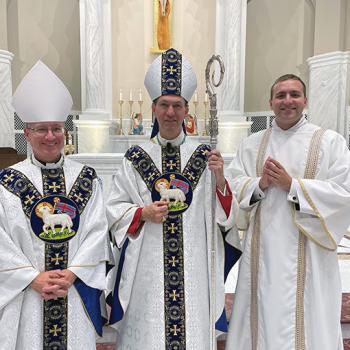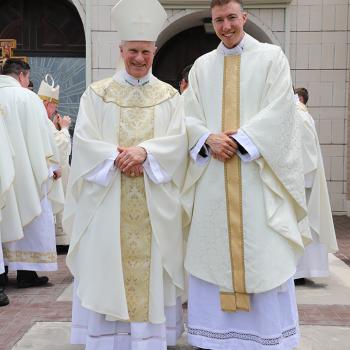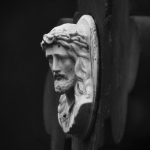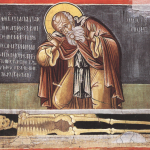Throughout the Old Testament there are several instances of God establishing a covenant. He did so with Adam in the Garden, with the nation of Israel through Moses where the Law was delivered, with Noah after the great flood, with Abraham and his descendants, and lastly with King David.
These covenants are a part of salvation history that prepared the world for the coming of the Messiah. Each one of these covenants was important and significant, and each one was fulfilled in the person of Jesus Christ. This covenant is known as the new covenant, and it is everlasting. Regarding this the Catechism of the Catholic Church states,
“God has revealed himself fully by sending his own Son, in whom he has established his covenant forever. The Son is his Father’s definitive Word; so there will be no further Revelation after him” (CCC para 73).
Adamic Covenant
The Adamic covenant is the first that the Lord had established. As its name states, it was established with our first parents on behalf of all humanity. We read in Genesis 1:26-31 about the creation of mankind, and how God rested on the seventh day. The number seen in the Hebrew language is the number of covenant.
However, there is a second part of the covenant that applies after the fall. God gives the first Gospel pronouncement which is known as the protoevangelium. Genesis 3:15 states, “I will put enmity between you and the woman, and between your offspring and hers; he will strike your head, and you will strike his heel” (NRSV). Christ is the fulfillment as his death, burial, and resurrection redeemed us from the sin of our first parents.
With Noah
After the great flood mentioned in Genesis, God made a covenant with Noah never to destroy the Earth with water again. The rainbow became a sign of the covenant that God made with Noah. This is seen in Genesis 9:13 which states, “I have set my bow in the clouds, and it shall be a sign of the covenant between me and the earth” (NRSV). Man will still struggle with sin, but Christ gives strength in the battle. The Vatican II document Gaudium Et Spes states, “But the Lord Himself came to free and strengthen man, renewing him inwardly and casting out the prince of this world”.
It also brought into focus the issue of capital punishment in Genesis chapter nine. It took on a new meaning when Christ was crucified. The covenant is for all time and for all people, as is the sacrifice of Christ.
With Abraham
God continued in his promise and made a covenant with Abraham. Genesis 12:2 states, “I will make of you a great nation, and I will bless you, and make your name great, so that you will be a blessing” (NRSV). God promised Abraham descendants as numerous as the stars, and this included those by adoption.
With Moses
This was fulfilled in Christ, because having faith in Christ we adopted sons of Abraham as Galatians 3:29 states. In the Mosaic covenant, God made a covenant with the people of Israel. Through the leadership of Moses, God freed His people from slavery, then made a covenant with them on Mount Sinai.
Christ fulfills the covenant by showing us how to live the law and calling to a higher standard of living as Christians. This can only be done through his grace and mercy.
With David
God also made a promise with King David and said that through his lineage the Messiah would be born. The promise can be seen in 2 Samuel 7:12-13 which states,
“When your days are fulfilled and you lie down with your ancestors, I will raise up your offspring after you, who shall come forth from your body, and I will establish his kingdom. He shall build a house for my name, and I will establish the throne of his kingdom forever” (NRSV).
In St. Augustine’s great work the City of God he equates King David to an Old Testament prefigurement of Christ. This covenant is fulfilled because he is proven to be in David’s lineage as is seen in Matthew Chapter one. It is a kingdom that will have no end.
Photos courtesy of Pixabay














